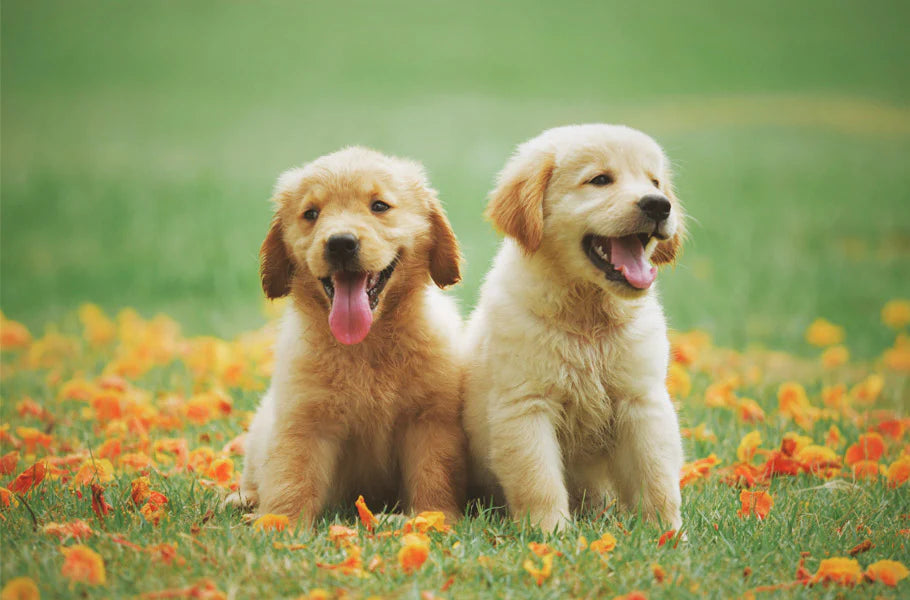In 24 cities

Puppy Socialisation
|
|
Time to read 4 min
Get product availability and delivery timelines based on your location.
Are you sure you want to delete this address?
Help us ensure a smooth delivery
Help us ensure a smooth delivery
SIZE GUIDE
|
|
Time to read 4 min
Puppy socialisation is the learning process wherein a puppy learns and develops key life skills essential for a happy and confident dog. The socialisation process teaches puppies how to behave in new situations, environments, and with new people or animals. The key to successful puppy socialisation is to expose them to positive experiences as soon as possible. These can vary from meeting new people, going for a car ride or interacting with other dogs, and many more.
Very similar to a young child, a puppy needs to be taught how to navigate their new environment with behaviour appropriate to the situation. This is done, to prevent or minimise fear-based behaviour later in life.
A well-socialised puppy becomes a confident, happy, well-behaved dog. The more comfortable your puppy is, with a wider range of environments and situations, the less likely they are to become anxious or scared in unfamiliar environments. Anxious or scared dogs tend to display aggressive behaviours such as biting and growling, out of fear. Neglecting socialisation can lead to poorly-behaved dogs and sometimes dangerous situations in the future.
Ever wonder why a dog is barking at nothing for hours on end? Why do two dogs go after each other when they meet on the street? It could be due to poor socialisation.
If you meet a puppy exhibiting these signs of poor socialisation, they are likely to be scared and/or stressed. Do not yell at them or raise your voice, stay calm and back away slowly.
Although socialisation never stops, the first three months of a puppy’s life are the best age for socialisation, as well as their development.
3-6 weeks: Puppies start acknowledging and approaching people. If handling them, be gentle and hold them safely to start fostering a positive experience.
6-8 weeks: Puppies remain with their mother and littermate until this age to ensure a healthy relationship with them. It is around this age that puppies are adopted and brought home and adjust to new places, people and experiences, making this a turning point for socialisation.
8-12 weeks: This is the age when fears begin to emerge, and requires patience and training to overcome.
Over 12 weeks: Socialisation is a lifelong process. Even the most socialised dog requires constant interaction with different people and environments to reinforce their learned behaviours.
Every puppy is different and learns at a different pace depending on their breed and unique disposition.
Immunisation, i.e. the entire vaccination process for young puppies over the first few weeks of life, is critical since their immune system isn’t strong enough to protect them from common viral diseases of dogs. However, this is also a critical period for puppy socialisation when they are open to new experiences, usually up to around 16 weeks of age.
But does that mean your puppy cannot go outside before the vaccinations are completed? Absolutely not. There are several safe opportunities for puppy socialisation during this critical period.
Start slowly, and introduce new experiences one at a time, giving your puppy enough time to adjust and acclimate to it.
People - Infants, toddlers, teens, adults, old people, men/women, people of different ethnicities and races, big and small people, people wearing sunglasses, hoods, hats, backpacks, umbrellas, uniforms (police, medical, firefighter), using canes, crutches or wheelchairs.
People doing things - running, throwing a ball, kneeling down in the garden, doing yoga, standing on ladders, carrying bags and boxes, vacuuming, etc.
Animals - cats, horses, chicken, goat, any other animals your dog may meet
Things that move - bicycles, skateboards, running children, kites, motorcycles, cars, trucks, fire engines, etc.
New places - your car, the vet clinic, parks, beaches, shopping areas, pet stores, etc
Everyday noises - blow dryers, kitchen appliances, vacuum cleaners, doorbells, children yelling, babies crying, wind and thunder noises, fireworks, etc.
Different surfaces - grass, pavement, carpet, shiny floors, sand, wet surfaces, etc.
Handling - handling for vet visits and grooming
Remember: Never force a scared puppy to deal with a new situation. Give them the space to come to terms with the fear on their own, otherwise they get overwhelmed and anxious. Comfort the puppy if they display any anxious or fearful behaviour.
//
2 item in cart
₹10,360

